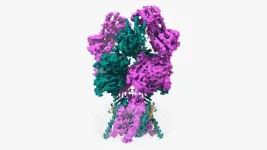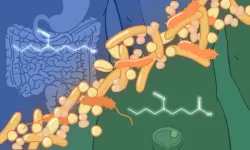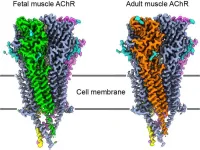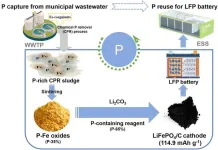(Press-News.org) E. Kate Webb, PhD, a research fellow at McLean Hospital who works in the Neurobiology of Fear Laboratory and Neurobiology of Affective and Traumatic Experiences Laboratory, led an investigation into whether individual resources and neighborhood resources, like greenspace, might impact neurobiology and the trajectory of posttraumatic stress disorder (PTSD) symptoms. Her research was published July 31st in JAMA Psychiatry.
What led you to examine the link between neighborhood characteristics and PTSD?
About 46 million people experience a traumatic event each year that is significant enough to require medical attention, and about 10 to 20 percent of those individuals will develop symptoms indicative of PTSD.
Research trying to predict who is at-risk for developing PTSD has often focused on individual-level factors, such as age or past trauma history. This body of research has largely overlooked influential neighborhood-level factors that may help mitigate the development of PTSD. That is a major gap, as we have learned that where someone lives can greatly impact mental health. For example, previous studies have found that living in a neighborhood with more access to greenspace is associated with lower levels of stress, anxiety and depression, regardless of socioeconomic status.
Our primary objective was to examine whether neighborhood and individual resources prospectively predicted PTSD trajectories following a recent trauma.
How did you conduct this study?
As part of the largest longitudinal, multisite study of adverse post-trauma outcomes of its kind (The AURORA Study), nearly 2,600 individuals were recruited from emergency departments across the United States within 72 hours of a trauma.
We examined this robust dataset closely and calculated new neighborhood factors. We geocoded participants’ home addresses and derived their exposure to greenspace from high-resolution satellite imagery as well as their neighborhood’s socioeconomic status.
Our first objective was to determine whether self-reported individual (e.g ability to cope with adversity) and neighborhood resources (greenspace) predicted an individual’s assignment into a specific PTSD trajectory, such as whether they had no, low or high symptoms over time. As a secondary objective, we examined relationships to these resources with neural activity gleaned from brain imaging the participants underwent.
What were your main findings?
We first identified a significant interaction between individual and neighborhood resources, such that individuals with high self-reported individual resources who were exposed to more greenspace had a greater likelihood of being assigned to a resilient trajectory; they experienced low or no symptoms over time. We did not find that greenspace alone affected PTSD trajectories, which suggests neighborhood-level greenspace works in conjunction with individual factors to protect against posttraumatic dysfunction.
We separately found that greenspace was associated with greater neural reactivity within the amygdala, a region of the brain involved in detecting and updating the value of rewarding cues. This finding, taken with previous studies, suggests greenspace may help replenish cognitive resources required to identify stimuli as rewarding. We however did not find a direct association with amygdala reactivity and PTSD trajectories. Additional work should examine other posttraumatic outcomes that may be related to reward reactivity, such anhedonia (lack of pleasure or motivation).
What next steps can build off this new research?
The inclusion of socioenvironmental factors such as neighborhood disadvantage and greenspace represents an exciting paradigm shift in psychiatry, but PTSD studies have predominately concentrated on risk factors. Although risk models are useful in pinpointing the types of adversity and inequities that contribute most to PTSD development, the type of resilience model employed in our study may offer an opportunity to identify where to invest critical financial and cultural resources to maximize treatment and intervention efficacy.
We believe this work highlights that examining factors at individual and neighborhood levels may improve the early identification of individuals at-risk for developing PTSD after trauma, which could then facilitate earlier delivery of effective treatments.
Authorship: In addition to Webb, other McLean authors include Lauren A.M. Lebois, PhD; Laura T. Germine, PhD; Scott L. Rauch, MD; Diego A. Pizzagalli, PhD; Kerry Ressler, MD, PhD; and Nathaniel G. Harnett, PhD.
Funding: The research was supported in part by a grant from the National Institute of Mental Health, F32MH134443; a Phyllis and Jerome Lyle Rappaport Mental Health Research Scholars Award; NIH grants K01MH129828 and U01MH110925; the US Army MRMC, OneMind and The Mayday Fund.
Paper cited: Webb et al. “Neighborhood Resources Associated With Psychological Trajectories and Neural Reactivity to Reward After Trauma.” JAMA Psychiatry. DOI: 10.1001/jamapsychiatry.2024.2148
About McLean
McLean Hospital has a continuous commitment to put people first in patient care, innovation and discovery, and shared knowledge related to mental health. It is consistently named the #1 freestanding psychiatric hospital in the United States by U.S. News & World Report, and is #1 in America for psychiatric care in 2023-24. McLean Hospital is the largest psychiatric affiliate of Harvard Medical School and a member of Mass General Brigham. To stay up to date on McLean, follow us on Facebook, YouTube, and LinkedIn.
END
Impact of neighborhood resources on resilience after trauma
McLean trauma researchers led an investigation into whether individual resources and neighborhood resources, like greenspace, might impact neurobiology and the trajectory of posttraumatic stress disorder (PTSD) symptoms
2024-07-31
ELSE PRESS RELEASES FROM THIS DATE:
Study finds nearly half of top cancer centers required universal masking during last winter’s COVID-19 surge
2024-07-31
Nearly half of the nation’s National Cancer Institute (NCI)-designated cancer centers required universal masking in key clinical areas during the winter 2023-2024 COVID-19 surge, according to a study by Tulane University researchers.
Overall, 41.8% of these 67 centers required some universal masking, according to the study, which published in JAMA Network Open. Further, 12 NCI-designated centers (18%) required universal masking in all areas. Masking policies were even more common in northeastern states and in centers with longer NCI designation, more funding and higher care rankings.
Those with cancer face higher risks from COVID-19 ...
This protein does “The Twist”
2024-07-31
Proteins are constantly performing a kind of dance. They move and contort their bodies to fulfill specific functions inside our bodies. The NMDAR protein executes an especially hard dance routine in our brains. One wrong step can lead to a range of neurological disorders. NMDAR binds to the neurotransmitter, glutamate, and another compound, glycine. These bindings control NMDAR’s dance steps. When their routine is over, the NMDAR opens. This open ion channel generates electrical signals critical for cognitive functions like memory.
The problem is that scientists couldn’t figure out the last step in NMDAR’s routine—until ...
Gut microbes implicated in bladder cancer
2024-07-31
At any given time, over 10 trillion microbes call our guts their home. From breaking down nutrients in our food to strengthening our immunity against pathogens, these microbes play an essential role in how we interact with the world. This includes – as shown in a new study by EMBL researchers and collaborators at the University of Split, Croatia – the way the body responds to carcinogens and develops cancer.
Carcinogens are chemicals that can cause ordinary cells to transform into cancer ...
Trust in physicians and hospitals declined over the course of the COVID-19 pandemic
2024-07-31
BOSTON– A cross-representative survey of adults in the United States showed decreasing levels of trust in physicians and hospitals during the COVID-19 pandemic—and the lower the trust, the less likely an individual was to get vaccinated against SARS-CoV-2 or influenza. The findings come from a survey study of more than 400,000 U.S. adults published in JAMA Network Open by a team co-led by investigators at Massachusetts General Hospital (MGH), a founding member of the Mass General Brigham healthcare system.
“Trust in ...
Unraveling a key junction underlying muscle contraction
2024-07-31
The connections between the nervous system and muscles develop differently across the kingdom of life. It takes newborn humans roughly a year to develop the proper muscular systems that support the ability to walk, while cows can walk mere minutes after birth and run not long after.
University of California San Diego researchers, using powerful new visualization technologies, now have a clear picture of why these two scenarios develop so differently. The results offer new insight into understanding muscle contraction in humans that may help in developing future treatments for muscular diseases.
“In this study we set out to understand ...
New method recovers phosphorus from wastewater to power the future of lithium-iron phosphate batteries
2024-07-31
In a recent study published in Engineering, a research team from the Shenzhen Engineering Research Laboratory for Sludge and Food Waste Treatment and Resource Recovery has introduced a pioneering method to tackle the critical global issue of phosphorus (P) scarcity. Their innovative approach leverages municipal wastewater to produce phosphorus vital for the manufacture of lithium iron phosphate (LiFePO4) batteries, a key component in the rapidly growing electric vehicle market.
As the demand for LiFePO4 batteries ...
SwRI awarded $35.7 million to support cryptologic systems for U.S. Navy
2024-07-31
SAN ANTONIO — July 31, 2024 —Southwest Research Institute will provide engineering and equipment support for advanced cryptologic technology for shipboard and airborne platforms as part of a $35.7 million contract with the U.S. Navy. The five-year contract will deliver services from June 2024 through June 2029, with the option for the U.S. Navy to add $14 million and extend the contract through 2031.
SwRI develops electronic warfare (EW) technology to detect, intercept and disrupt a range of signals on the electromagnetic spectrum, supporting efforts to thwart ...
With biodiversity under threat, scientists suggest the need for a new biorepository—on the moon
2024-07-31
With numerous species facing extinction, an international team of researchers has proposed an innovative solution to protect the planet's biodiversity: a lunar biorepository. This concept, detailed in a recent article in the journal BioScience, is aimed at creating a passive, long-lasting storage facility for cryopreserved samples of Earth's most at-risk animal species.
Led by Dr. Mary Hagedorn of the Smithsonian's National Zoo and Conservation Biology Institute, the team envisions taking advantage of the Moon's naturally cold temperatures, particularly in permanently shadowed regions near the poles, where temperatures remain consistently below –196 degrees ...
Strong El Nino makes European winters easier to forecast
2024-07-31
Heavy rain and flooding in Brazil in November could tell forecasters whether December, January and February in Britain will be cold and dry or mild and wet.
This is because forecasting European winter weather patterns months in advance is made simpler during years of strong El Niño or La Niña events in the tropical Pacific Ocean, a new study has found.
A strong El Nino or La Nina in the Pacific Ocean can bring big changes in temperatures, wind patterns and rainfall patterns to South America. When ...
MD Anderson and collaborators to launch project studying T cells on International Space Station
2024-07-31
HOUSTON ― The University of Texas MD Anderson Cancer Center and collaborators are initiating a research project that will send T cells to the International Space Station (ISS) to study the effects of prolonged microgravity on cell differentiation, activation, memory and exhaustion. These results will be further analyzed on Earth to uncover signaling pathways and identify potential immune targets that can improve treatment strategies for patients with cancer and other diseases.
To accomplish this work, MD Anderson researchers ...
LAST 30 PRESS RELEASES:
Numbers in our sights affect how we perceive space
SIMJ announces global collaborative book project in commemoration of its 75th anniversary
Air pollution exposure and birth weight
Obstructive sleep apnea risk and mental health conditions among older adults
How talking slows eye movements behind the wheel
The Ceramic Society of Japan’s Oxoate Ceramics Research Association launches new international book project
Heart-brain connection: international study reveals the role of the vagus nerve in keeping the heart young
Researchers identify Rb1 as a predictive biomarker for a new therapeutic strategy in some breast cancers
Survey reveals ethical gaps slowing AI adoption in pediatric surgery
Stimulant ADHD medications work differently than thought
AI overestimates how smart people are, according to HSE economists
HSE researchers create genome-wide map of quadruplexes
Scientists boost cell "powerhouses" to burn more calories
Automatic label checking: The missing step in making reliable medical AI
Low daily alcohol intake linked to 50% heightened mouth cancer risk in India
American Meteorological Society announces Rick Spinrad as 2026 President-Elect
Biomass-based carbon capture spotlighted in newly released global climate webinar recording
Illuminating invisible nano pollutants: advanced bioimaging tracks the full journey of emerging nanoscale contaminants in living systems
How does age affect recovery from spinal cord injury?
Novel AI tool offers prognosis for patients with head and neck cancer
Fathers’ microplastic exposure tied to their children’s metabolic problems
Research validates laboratory model for studying high-grade serous ovarian cancer
SIR 2026 delivers transformative breakthroughs in minimally invasive medicine to improve patient care
Stem Cell Reports most downloaded papers of 2025 highlight the breadth and impact of stem cell research
Oxford-led study estimates NHS spends around 3% of its primary and secondary care budget on the health impacts of heat and cold in England
A researcher’s long quest leads to a smart composite breakthrough
Urban wild bees act as “microbial sensors” of city health.
New study finds where you live affects recovery after a hip fracture
Forecasting the impact of fully automated vehicle adoption on US road traffic injuries
Alcohol-related hospitalizations from 2016 to 2022
[Press-News.org] Impact of neighborhood resources on resilience after traumaMcLean trauma researchers led an investigation into whether individual resources and neighborhood resources, like greenspace, might impact neurobiology and the trajectory of posttraumatic stress disorder (PTSD) symptoms






